Frequently Asked Questions

Notice: Part of the FAQs were taken from the book and therefore appear here as dialogues.
The world around us is constantly changing, and so is our business environment. In such a high-speed pursuit, the challenge is at its most fierce. Strategy is the keystone of any organisation, a stone you have to change from time to time before the elements would strike. Without a clear strategy, your organisation would act like a headless organ, a stray sheep, a ship without a helm.
Skipping Strategy or sloppily producing it would be much like collecting water with a net later on.
Where is the problem?
The business arena is worse than a chess game as one plays against many opponents.
In Strategy, there is no place for half measures as the company’s stamina will be decided by its Strategy and its Tactics—its execution.
Indistinct Strategy, one that skips key elements, presents no synergy and does not show you all the options standing before you, jeopardises the future of your organisation, turns a fist to limp fingers. Short-sightedness is forever one of your biggest bullies, especially where there is a lack of a tool to supply you with a broader selection of strategic paths. This tool allows you to see the horizon when others can hardly see the tips of their noses.
What is the G-POST TOOL?
Portray Strategy as a mould that points the chosen path to reach your target, dictates the cast-form of tactic— the engine to get you there, in its own spitting image.
The G-POST tool – The “Golden Path of Strategy” is a tool to turn limp fingers into a powerful fist and elegantly pierce your target. It is a structured tool that creates a mould to cast your tactics. It has 36 stages – its vertebrae, its Strategic Critical Dimensions (SCD). The sum of those stages builds your Strategy’s backbone – the G-POST cord of Strategy. Each stage unfolds up to 13 choices for you to opt from, which sums up to 250 inner strategic paths that provide you with the most suitable combination for your unique situation. That allows you a panoramic view while building your strategic map to follow.
The G-POST is a systematic orientation tool that creates a long DNA-like chain – a Cord of Strategy that includes all the needed instructions to plug in Strategy to tactic and tactic into prolific reality. It is an organic tool where the choice you opt for must be synergetic with the previously chosen stage, carrying a “genetic similarity” and consistency with the previously selected stages and the company’s internal and external constraints and accelerators. The G-POST gives you more strings to your bow and a wider selection of arrows in your quiver, arrows for different ranges and purposes.
The sum of the strategic paths of all stages woven with a ‘gold silk thread’ is your chosen Golden Path of Strategy-G-POST, the backbone of Strategy, the Strategy. Your strategy map in the maze of a complex reality, the canals in which you will cast your tactics for successful execution.
[(Want) × Need × Can -(To-do)]^36SCDs*=G-POST=Strategy**
Want Want
Who is the G-POST TOOL for?
A company of any industry or size, a country, and some suggested even individuals.
What are the advantages of the G-POST TOOL?
An all-inclusive strategy tool that includes the Strategy of the core and mantle Product Categories in synergy.

Sets the optimal Strategy top-down, from corporate Strategy down to its derivatives.

Unfolds the key dimension of Strategy under the spotlight in one integrated tool.

It is suitable for any sort of Product Category, from services to tangible products.

Deploys all Strategy’s “chess pieces”, all possible choices on one board, one organ.

Its 250 inner Strategic-Paths provide you with the combination that suits your unique condition.

Covers the most critical strategic intersections and strategic decisions.
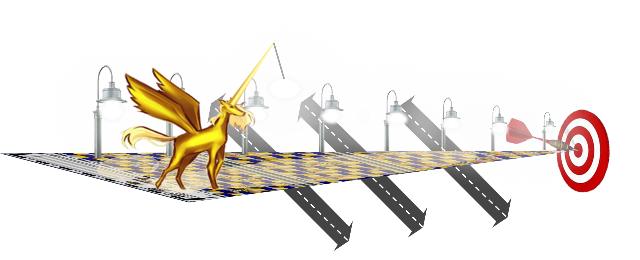
All the derivatives of Strategy are connected and interwoven to prop and support each other.
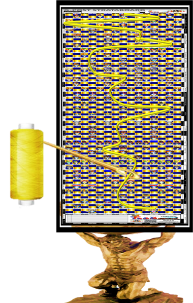
Creates consistency amongst previously chosen choices.

Presents a panoramic view of the complex business arena.

Generates a complete road map to follow.

Offers you strategic choices that you couldn’t clearly see before.

Creates a common language and clarity across all the organisation’s functions and ranks.

Tightens cooperation amongst the organisation’s arms and functions.

Puts your staff on the “same page”.

Focuses your resources on the chosen direction to march an “army” along a distinct path.

Clearly sets resource allocation priorities.
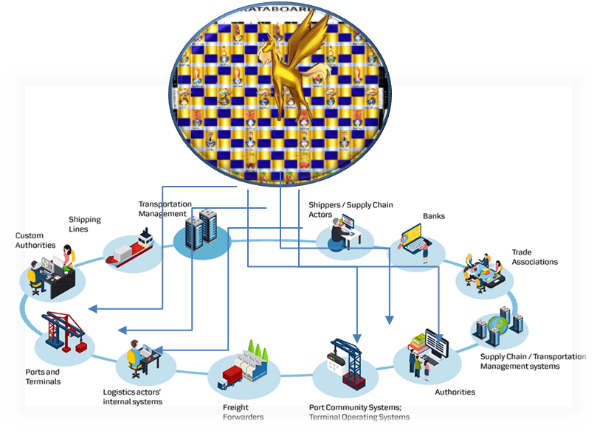
Helps you put a price tag on your choice as it breaks the sum strategy into its moving parts.
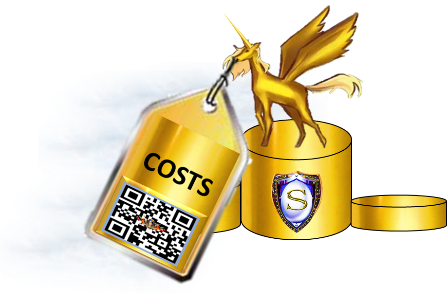
Allows better exploitation and distribution of shared resources in your organisation.

Simplifies Strategy’s planning process.
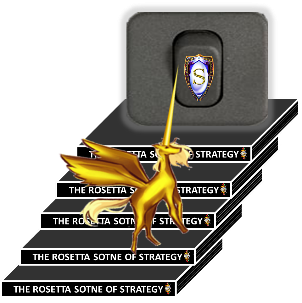
Provides a systematic process as a strategic decision-making tool.
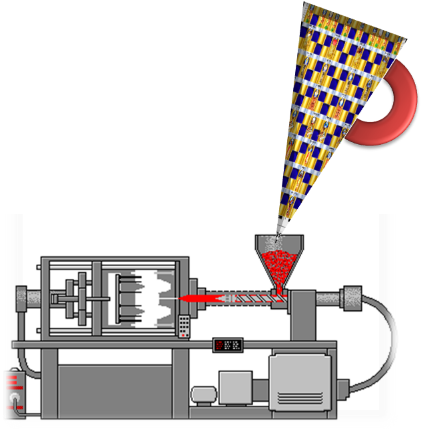
A robust platform to build and execute Strategy.

Creates uniformity of the process for future strategic decisions – no need to reinvent the wheel time and again.

Dictates clear-cut guidelines to build tactics and create stronger impact cast-form by detailed Strategy.

Acts as a sorting tool that guides the suitability of your actions – your tactics to fulfil Strategy.

Helps you see the wood for the trees and prioritise your actions.

Promotes better coordination of your actions.

Promotes better competitive standing, stamina and adaptation in a constantly changing environment.

Helps you predict the strategic moves of your main competitors and plan better.

Promises strategic consistency and synergy amongst all the organs of the company and your targeted market.

Allows you a better commanding view.

What are the G-POST’s SCD-Strategic Critical Dimensions of strategy?
These are 36 essential elements functioning as road signs that guide your strategy. Those are essential for a well-built strategy. The 36 SCDs are part of the following building blocks:
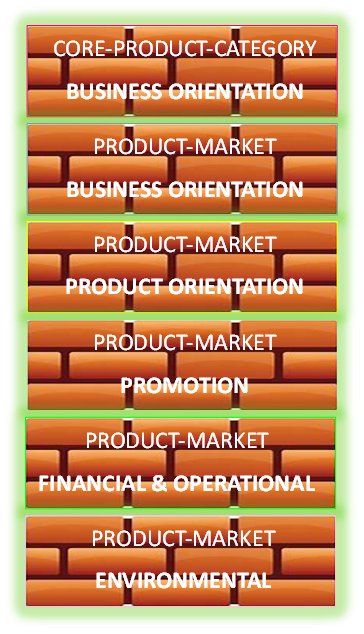
What is the difference between the Golden Path of strategy to a strategic path?
Each of the 36 stages will offer what we call strategic paths. The sum of the selected paths, the trail that has been chosen is the Golden Path of strategy, the strategy, the mould we will cast in the tactics later on.
Why should it be done with extra care?
A company must bear in mind that its choices along the G-POST must be carefully considered. Those choices will immediately affect the exploitation and distribution of the company’s resources, competitiveness, adaptation to its markets, the level of risk exposure and the degree of its completeness. Thus, as the future of the company is at stake, extra care is a must.
Which type of organisation does the G-POST tool suit?
The tool suits any type of company from industry to services, hi-tech to low tech, big or small, from one person to an entire country.’
‘Sir, I was told by a few senior managers that they even used it for their own personal orientation, their personal strategic path, to promote their very own carrier in the job market.’
‘Absolutely true. Mr Roth, to be honest, I use it myself.
How many Mantle-Product-Markets (MPM) should be processed?
As you can see in the NAS GROUP example, there are minor Product-Markets that are not part of the spearhead; as to those, you should either let them be or cease their existence, up to you and the circumstances. I strongly recommend using the G-POST for existing Product-Markets with at least 5% of the NPV. Even so, it depends on the company’s size and structure. Some MPMs can currently be petty, small, or even entirely new ones but with potential. Nevertheless, from the Core-Product-Category, I recommend processing up to 5 CMPMs, and from each of the Mantle-Product-Categories, not more than two MPMs.
How many strategic paths can be selected at each stage?
Do not opt for more than one strategic path at the same stage since it will dim your focus, and focus you must seek. After all, that is what strategy is all about. However, in some rare cases, exceptions are possible, but I will mention those later.
Is it possible to Skip irrelevant stages of the G-POST?
It is allowed and will not stop you from reaching a clear and suitable strategy. However, consider carefully before skipping a stage.’
‘Sir, as any art, business art included, the strategic direction might start from somewhere in the middle of the model, from one of the paths of a middle stage. Can the process start from one of the middle stages of the G-POS?’
‘That is a good question, and the answer is yes but not recommended. Nonetheless, if you cannot help yourself, you should still follow the sequence of the model, and if you start from somewhere in the middle of the G-POST, first climb up till stage one and make sure all stages are synergetic, then climb down till the last stage. However, the way of doing it is first to describe the idea to your team. Then, agree on its potential to the company and the suitability to the circumstances and start from stage one.
‘That makes sense. Thank you, Sir.’
‘Not a bother, Mr Roth, not a bother at all. And now to the G-POST process:
Any Special preliminary preparation by the strategy team?
As mentioned in the G-POST preliminary stage, every member of the G-POST team must have the preliminary stage information in his hand at least two weeks prior to the major G-POST first meeting. That information includes:
Step 1: Classification of the company’s activity into:
- Core-Product-Category.
- Mantle-Product-Categories.
Dividing the company’s activities into Product-Markets:
- Core Product-Market.
- Core-Mantle-Product-Markets.
- Mantle-Product-Markets.
Step 2: Proposed new Product-Market list.
Step 3: SWOT.
Step 4: The G-POST terminology and the way it works.’
‘Sir, you have mentioned appointing one of the senior managers as the head of the information desk for that matter.’
‘Indeed, Mr Roth, not with those exact words, but nagging desk might be more befitting, so to speak,’ they both smiled.
‘Well, Sir, that is the naked truth of that sort of position. Should the CEO give it to someone he dislikes or just someone he utterly despises?’ They both laughed.
‘Whoever steps into your office first! Next,
Where?
Outside the company, if possible, at least for the plenary meeting. I strongly recommend giving all the needed attention to your company strategy, whatever it takes, including isolating your team from the heavy daily burden and flying them to a desert island.
Who should take part in the G-POST team?
The board members or at least the chairperson and a number of them should participate and all the departments’ senior managers. But in the case of the spearhead departments such as business development, marketing including sales, I warmly recommend inviting one or two workers from the second management level, especially people who have tight contact with the market. Moreover, if there is a veteran worker who you believe has a positive input, it would be sensible to include him as he might shed some light in an unexpected, refreshing way.
